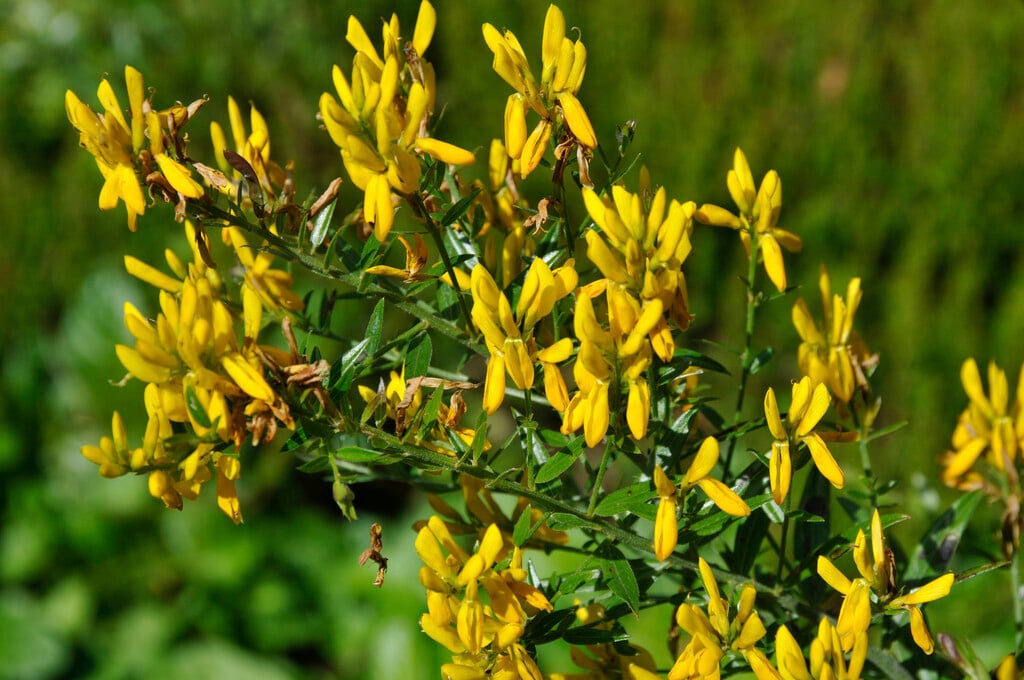Genista tinctoria
dyer's greenweed
A somewhat variable, often low-growing deciduous shrub to around 60cm high, with small, narrow green leaves. Numerous clusters of small, bright yellow flowers are borne at the tips of branching stems, from midsummer into early autumn. Historically used as a natural dye
Other common names
base broomdye weed
see moredyer's broom
dyer's greenwood
greening weed
greenweed
greenwood
Kendal green
rock broom
Salem wood wax
waxen woad
woad wax
wood waxen
Size
Ultimate height
0.5–1 metresTime to ultimate height
2–5 yearsUltimate spread
0.5–1 metresGrowing conditions
Moisture
Well–drainedpH
Acid, Alkaline, NeutralColour & scent
| Stem | Flower | Foliage | Fruit | |
| Spring | Green | |||
|---|---|---|---|---|
| Summer | Yellow | Green | ||
| Autumn | Yellow | Green | ||
| Winter |
Position
- Full sun
Aspect
South–facing or West–facing
Exposure
Exposed or ShelteredDrought resistance
Yes Hardiness
H6Botanical details
- Family
- Fabaceae
- Native to GB / Ireland
- Yes
- Foliage
- Deciduous
- Habit
- Spreading branched
- Genus
Genista are deciduous, sometimes spiny, shrubs or small trees with small, simple or trifoliate leaves and solitary, racemose or clustered, pea-like yellow flowers which are sometimes fragrant
- Name status
Correct
How to grow
Cultivation
Needs a sunny position and prefers well-drained, relatively poor soils
Propagation
Propagate by seed, or by semi-ripe cuttings in summer
Suggested planting locations and garden types
- Coastal
- Cottage and informal garden
- Gravel garden
- Rock garden
- Ground cover
Pruning
Minimal pruning required, see pruning group 1 if necessary. Avoid cutting into old wood
Pests
May be susceptible to aphids and gall mites
Diseases
May be susceptible to honey fungus in gardens where it is present but insufficient data to determine degree of susceptibility
Love gardening
Sign up to receive regular gardening tips, inspiration, offers and more
View our Privacy Policy
Get involved
The Royal Horticultural Society is the UK’s leading gardening charity. We aim to enrich everyone’s life through plants, and make the UK a greener and more beautiful place.
